States that will be most affected if Roe v. Wade is repealed

Sean Pavone // Shutterstock
States that will be most affected if Roe v. Wade is repealed
One historic decision has been endlessly passed around states over the last year. Roe v. Wade expressly protects a pregnant person’s right to choose to have an abortion. It’s under review by a now supermajority conservative Supreme Court, but reports suggest it could be struck down at any moment, as more and more states bring their own abortion laws to the highest court in the land.
At the center of the pending case is a 2018 Mississippi law that banned abortions after 15 weeks of pregnancy. Mississippi’s attorney general directly asked the court to not only uphold the law but overturn Roe v. Wade, saying states should have more power over abortion access. Now, the Supreme Court has allowed a Texas law banning abortions at six weeks to stay in place until the lawsuit is resolved.
States have already employed many kinds of restrictions, including but not limited to: parental consent for young women seeking abortions, bans on telemedicine for medicated abortions, mandated counseling and ultrasounds before the procedure, and TRAP laws, which impose burdensome medical standards such as hospital-admitting privileges on abortion clinics. Florida is now considering a 15-week abortion limit in their state legislature just as the 2022 session begins.
Many states with either anti-choice governors or constituents against abortion are attacking Roe v. Wade by enacting laws they can’t enforce, in case the Supreme Court decides in 2022 to overturn the decision. A decision on the famous Mississippi case is not expected until June 2022, but the pro-life movement is trying to kick down the door.
To find out which states would be most affected by this decision, Stacker consulted a July 2019 study published in reproductive health journal Contraception, updated in 2021 by Professor Caitlin Myers at Middlebury College. The study analyzed the impact of a post-Roe world by analyzing states’ current laws and political climate to identify states that would be at a high risk of outlawing abortion.
Eight states maintain so-called “trigger bans” that would immediately outlaw abortion if Roe v. Wade were overturned. Based on this and other information, any state that could quickly enact restrictions if Roe v. Wade was overturned is listed as “high-risk.” States could be classified as “high-risk” even if they have no laws currently on the books, but simply a political climate unamiable to abortion. Then, using Census demographic data, the study calculated the number of women that would be affected by an increase in travel time to the nearest abortion clinic in a scenario where all high-risk states ban abortion.
The makeup of the surrounding states is enough to limit abortion access by an over 1000% increase in distance. Keep reading to see which states will be most affected if Roe v. Wade is repealed.
![]()
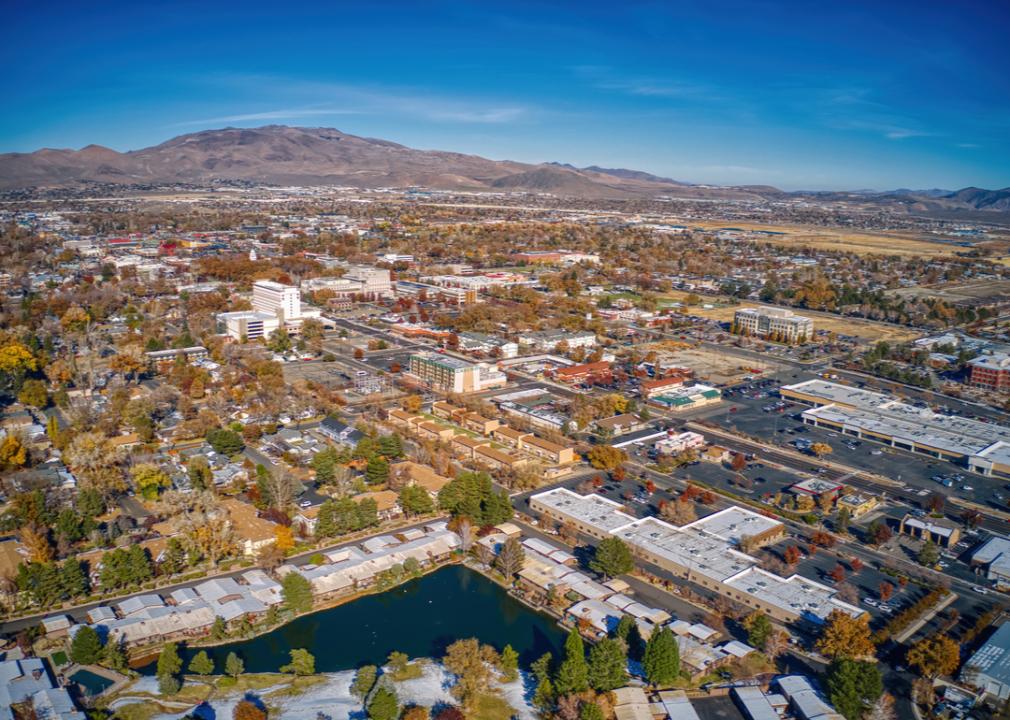
Jacob Boomsma // Shutterstock
#29. Nevada
– If abortion bans take effect in all high-risk states:
— Predicted change in abortion rate: -0.2%
— Affected population: 11,808 (2.0% of women aged 15-44)
— New average distance to nearest abortion clinic: 11 miles (22.2% increase)
– Present day:
— Abortion facilities: 9
— Average distance to nearest abortion clinic: 9 miles
Though abortion will likely remain legal in Nevada, people in need of services will have to travel a bit farther to get them, due to bordering states that would outlaw them. Nevada residents voted to keep abortion rights for pregnant women under 24 weeks into the gestational period in 1990, and that law could only be repealed by another direct vote of the people.
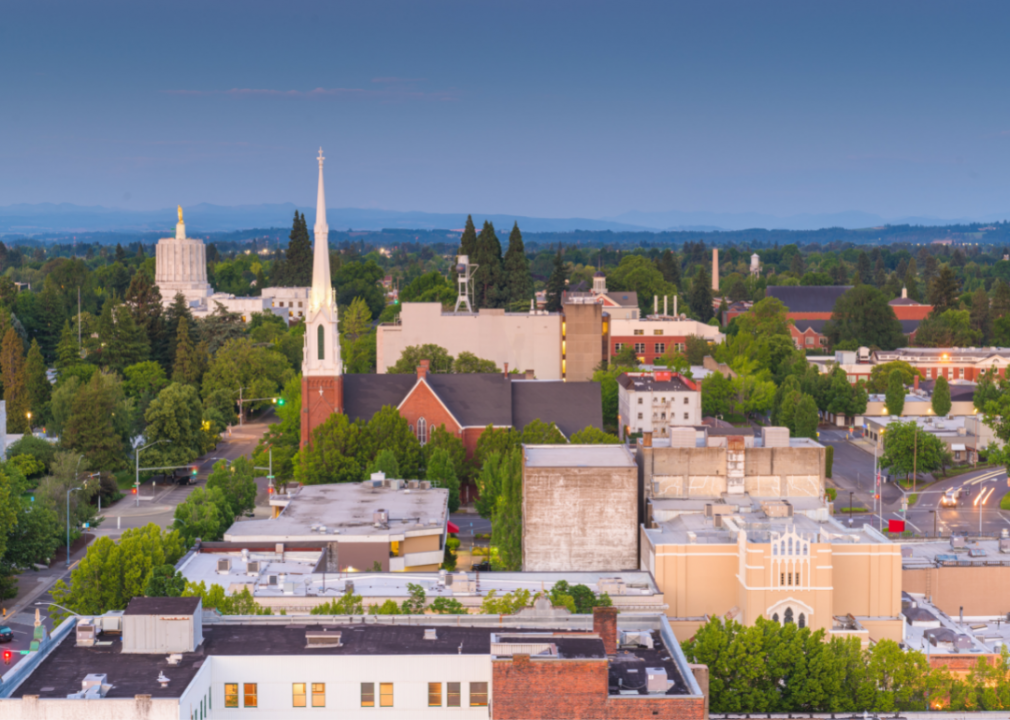
Canva
#28. Oregon
– If abortion bans take effect in all high-risk states:
— Predicted change in abortion rate: -0.2%
— Affected population: 7,245 (0.9% of women aged 15-44)
— New average distance to nearest abortion clinic: 16 miles (6.7% increase)
– Present day:
— Abortion facilities: 15
— Average distance to nearest abortion clinic: 15 miles
Oregon and Nevada share a border with California, a state with several abortion protections others do not have, including constitutional protection. Reproductive rights were recognized in California’s constitution in 1969, giving people in states like Oregon more options. Oregon passed the Reproductive Health Equity Act in 2017, which expanded abortion access by requiring private health insurance to cover abortions, and funding services for those who would otherwise be excluded from coverage, such as DACA recipients.

Canva
#27. Kansas
– If abortion bans take effect in all high-risk states:
— Predicted change in abortion rate: -0.3%
— Affected population: 20,488 (3.6% of women aged 15-44)
— New average distance to nearest abortion clinic: 54 miles (1.9% increase)
– Present day:
— Abortion facilities: 4
— Average distance to nearest abortion clinic: 53 miles
Kansas already has a few common restrictions on abortion, such as limits on public and private funding for the procedure. Though the state supreme court ruled in 2019 the right to an abortion is protected in the Kansas constitution, conservative lawmakers recently voted to to put a proposed anti-abortion amendment to the state constitution on the 2022 ballot. The majority of the states surrounding Kansas are far more restrictive.
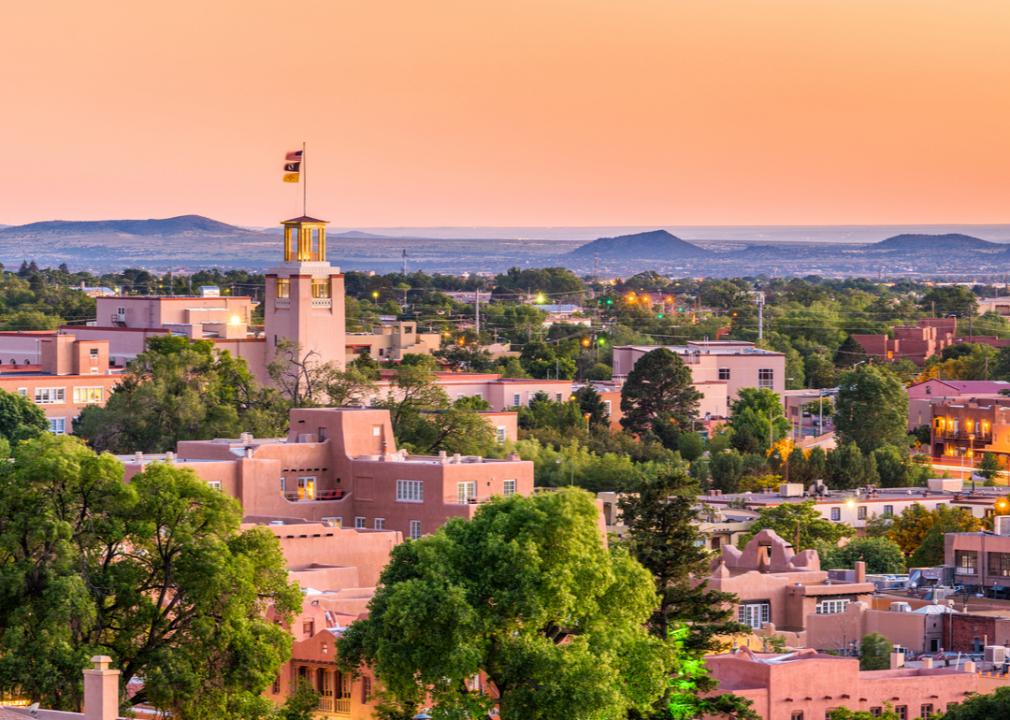
Sean Pavone // Shutterstock
#26. New Mexico
– If abortion bans take effect in all high-risk states:
— Predicted change in abortion rate: -0.5%
— Affected population: 40,320 (10.1% of women aged 15-44)
— New average distance to nearest abortion clinic: 58 miles (1.8% increase)
– Present day:
— Abortion facilities: 5
— Average distance to nearest abortion clinic: 57 miles
Women in New Mexico were once facing a long-dormant abortion ban that was deemed unconstitutional and unenforceable, but they now have access to legal procedures and public funding. In February 2021, New Mexico Gov. Michelle Lujan Grisham signed a bill that finally overturned that law, which would have triggered a statewide ban if Roe v. Wade were reversed.
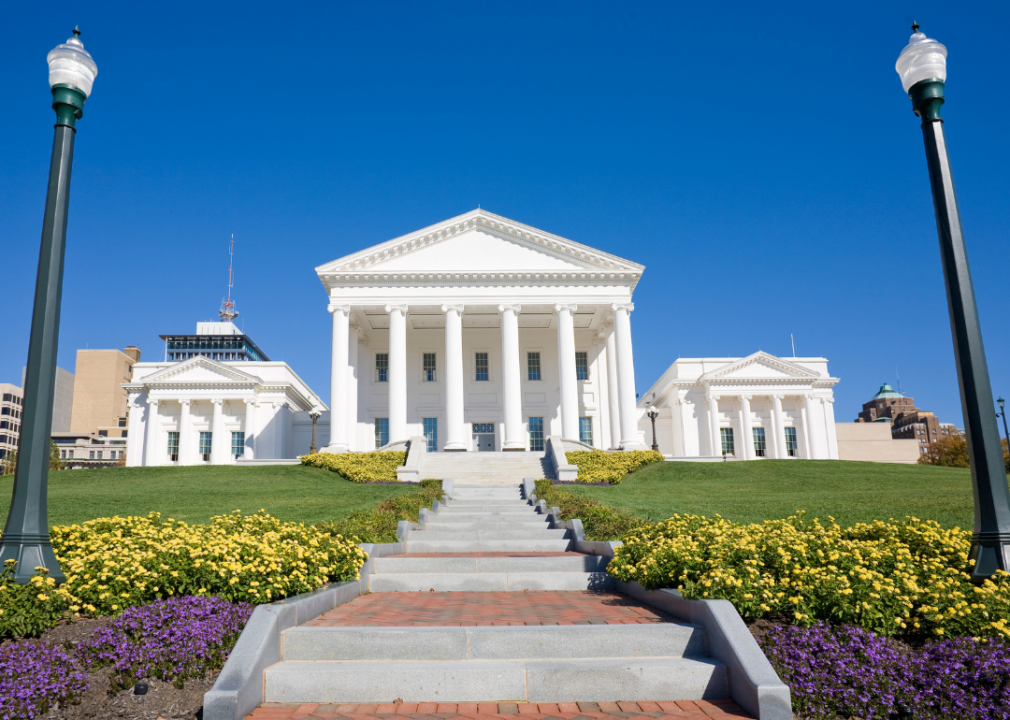
Canva
#25. Virginia
– If abortion bans take effect in all high-risk states:
— Predicted change in abortion rate: -0.9%
— Affected population: 92,473 (5.5% of women aged 15-44)
— New average distance to nearest abortion clinic: 25 miles (19.0% increase)
– Present day:
— Abortion facilities: 16
— Average distance to nearest abortion clinic: 21 miles
Virginia is one of many states repealing previously restrictive abortion laws amid concerns for Roe v. Wade. As of 2020, Virginia health insurance carriers can cover abortion services, though they are not required to do so. Nearby in Maryland, those seeking abortions have protection outside of Roe v. Wade.
You may also like: U.S. cities with the cleanest air
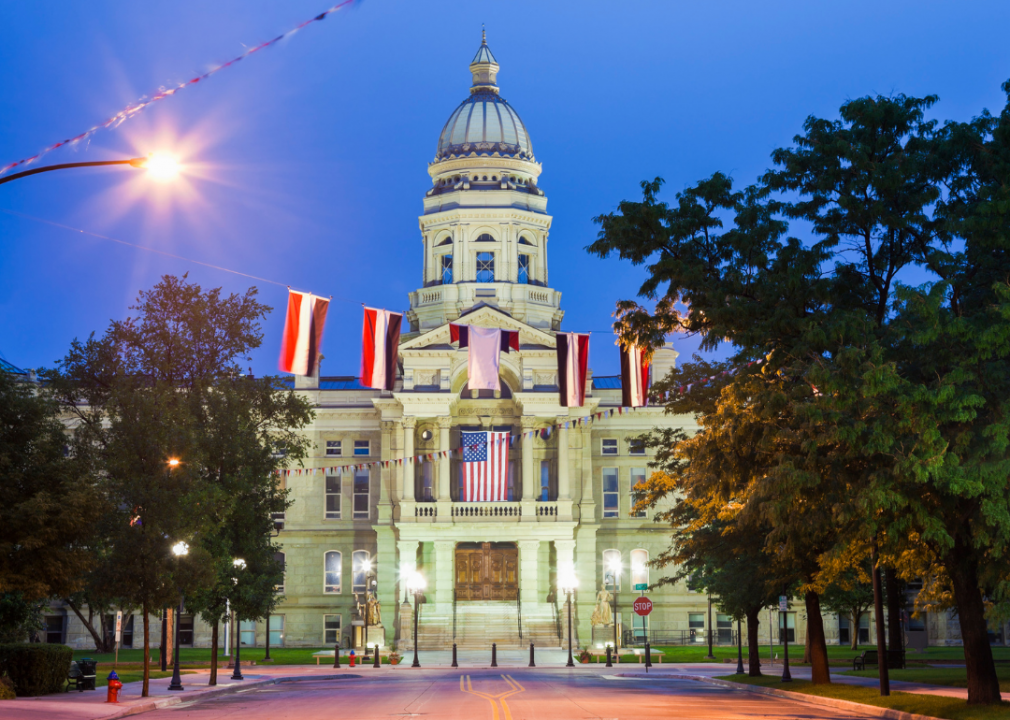
Canva
#24. Wyoming
– If abortion bans take effect in all high-risk states:
— Predicted change in abortion rate: -1.1%
— Affected population: 12,111 (11.2% of women aged 15-44)
— New average distance to nearest abortion clinic: 138 miles (3.0% increase)
– Present day:
— Abortion facilities: 2
— Average distance to nearest abortion clinic: 134 miles
People won’t find abortion protections in Wyoming’s state law or its constitution, and will barely find a clinic they can use. What they will find is a legislature that is advancing bills that restrict abortion access, including one that prevents women from using student health insurance for the procedure. If Roe v. Wade were outlawed, the legality of abortions could be at risk.
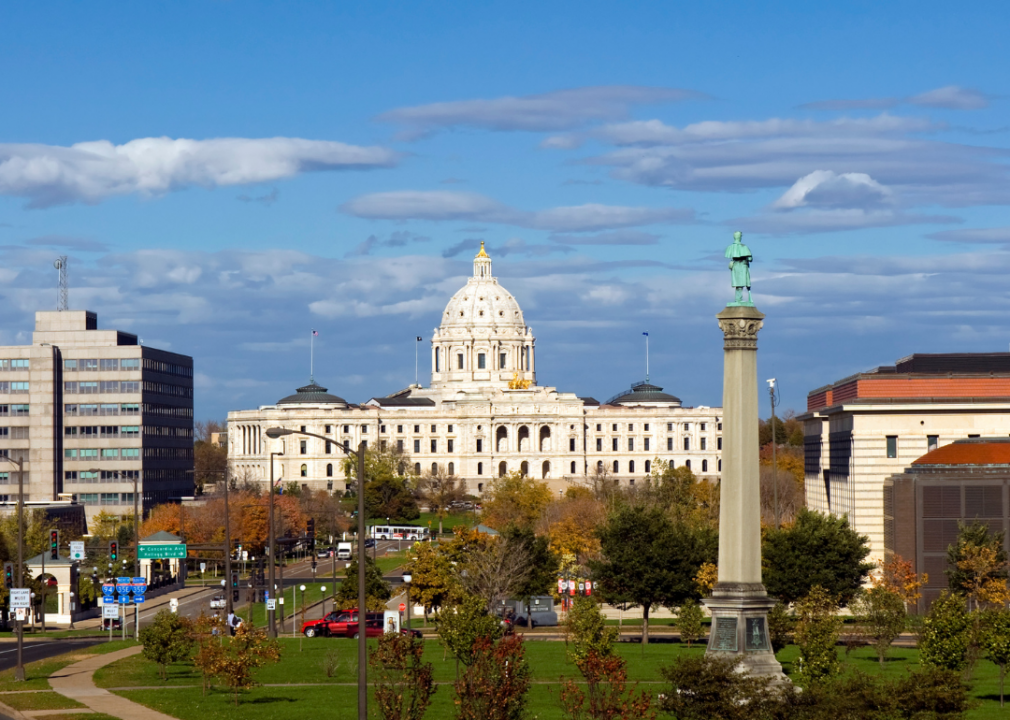
Canva
#23. Minnesota
– If abortion bans take effect in all high-risk states:
— Predicted change in abortion rate: -1.6%
— Affected population: 95,799 (8.9% of women aged 15-44)
— New average distance to nearest abortion clinic: 40 miles (25.0% increase)
– Present day:
— Abortion facilities: 7
— Average distance to nearest abortion clinic: 32 miles
The right to abortion has been protected in Minnesota since 1995, when the Minnesota Supreme Court ruled that a woman’s right to privacy includes the right to terminate a pregnancy. However, Minnesota shares a border with two very restrictive states that may try to immediately restrict abortions if Roe v. Wade is gone.
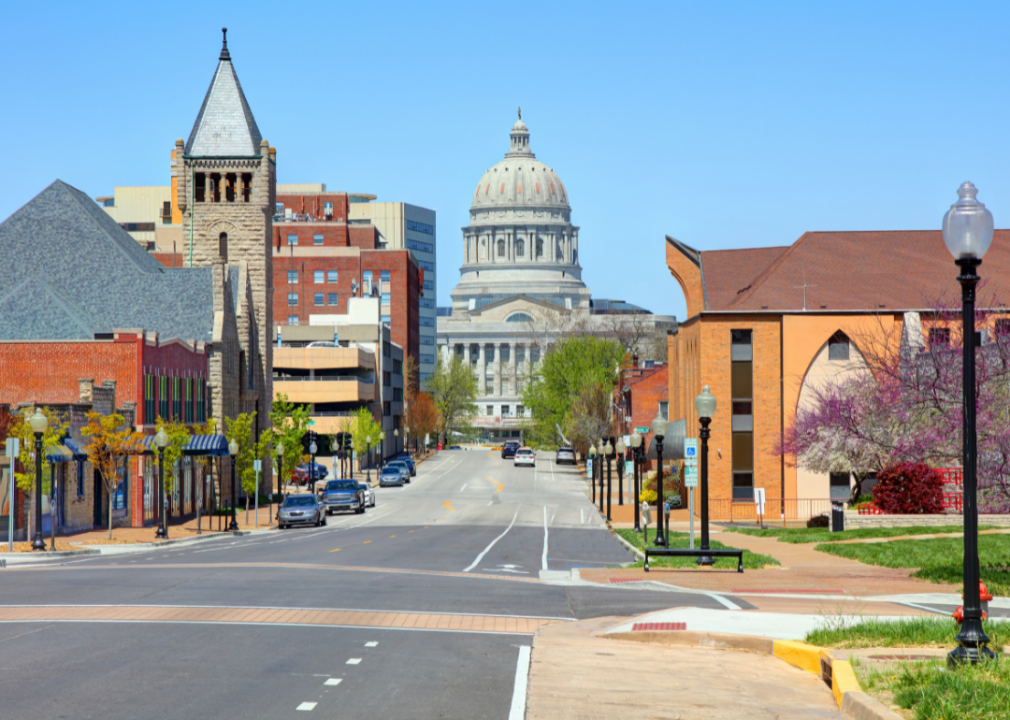
Canva
#22. Missouri
– Policies: Trigger ban, high-risk
– If abortion bans take effect in all high-risk states:
— Predicted change in abortion rate: -3.2%
— Affected population: 708,893 (60.2% of women aged 15-44)
— New average distance to nearest abortion clinic: 74 miles (10.4% increase)
– Present day:
— Abortion facilities: 1
— Average distance to nearest abortion clinic: 67 miles
Missouri is the first state on this list with a trigger ban. Though previous bans were declared unconstitutional, one recent ban would immediately go into effect if Roe v. Wade is repealed. In June 2021, a federal appeals court blocked Missouri from enforcing the bill that prohibits all abortions after eight weeks.
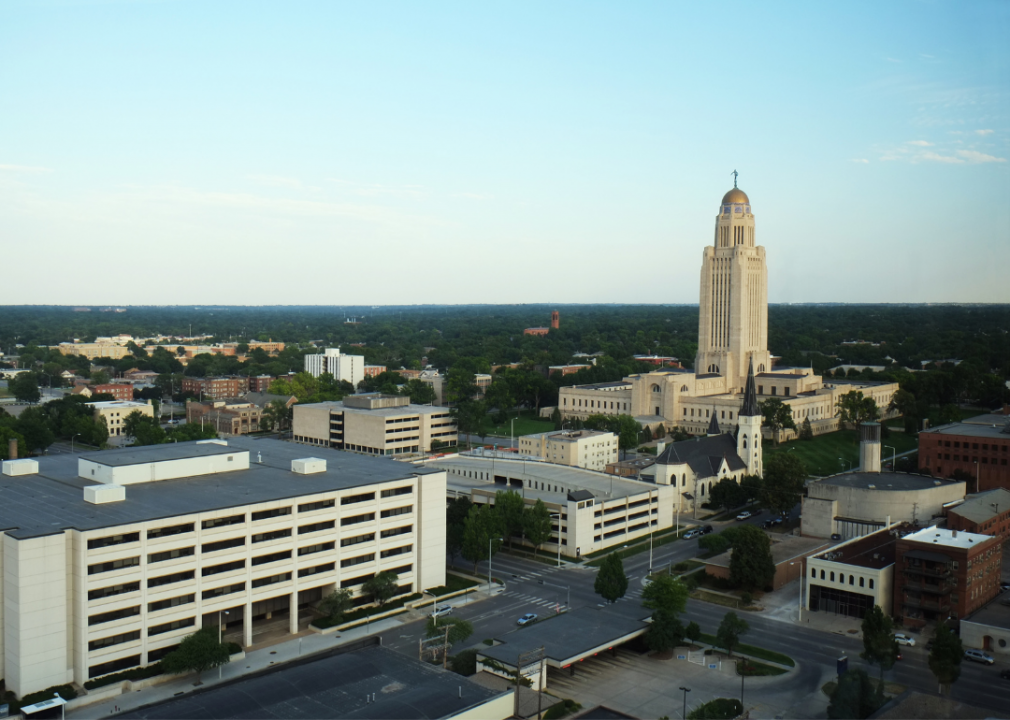
Canva
#21. Nebraska
– Policies: High-risk
– If abortion bans take effect in all high-risk states:
— Predicted change in abortion rate: -8.4%
— Affected population: 331,206 (88.6% of women aged 15-44)
— New average distance to nearest abortion clinic: 69 miles (56.8% increase)
– Present day:
— Abortion facilities: 3
— Average distance to nearest abortion clinic: 44 miles
It’s already a felony to get an abortion after 20 weeks in Nebraska. Though there’s no trigger ban, the state government enacted a law last year prohibiting dilation and evacuation (D&E) abortions, which are performed in 95% of second trimester abortions.
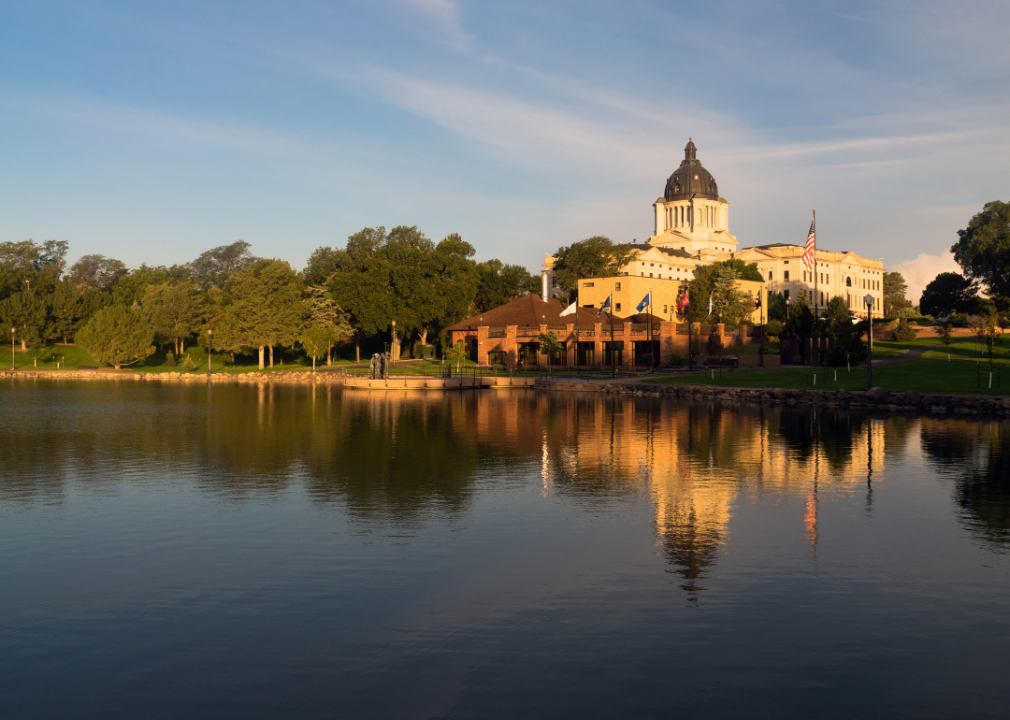
Canva
#20. South Dakota
– Policies: Trigger ban, high-risk
– If abortion bans take effect in all high-risk states:
— Predicted change in abortion rate: -12.9%
— Affected population: 112,850 (69.6% of women aged 15-44)
— New average distance to nearest abortion clinic: 189 miles (43.2% increase)
– Present day:
— Abortion facilities: 1
— Average distance to nearest abortion clinic: 132 miles
South Dakota has had a trigger law waiting to become enforceable since 2005. It escalates the practice of abortion to a felony for physicians who provide it. Like its neighbor North Dakota, the state has just one facility, which would have to stop providing abortions in a no-Roe country.

Canva
#19. West Virginia
– Policies: High-risk
– If abortion bans take effect in all high-risk states:
— Predicted change in abortion rate: -15.5%
— Affected population: 184,170 (58.5% of women aged 15-44)
— New average distance to nearest abortion clinic: 126 miles (129.1% increase)
– Present day:
— Abortion facilities: 2
— Average distance to nearest abortion clinic: 55 miles
In 2018, 52% of West Virginia voters decided to amend the state’s constitution and ensure abortion is not protected if Roe v. Wade is repealed. West Virginia is surrounded by states with similar plans, apart from Maryland, so people will have to travel even farther to find services.
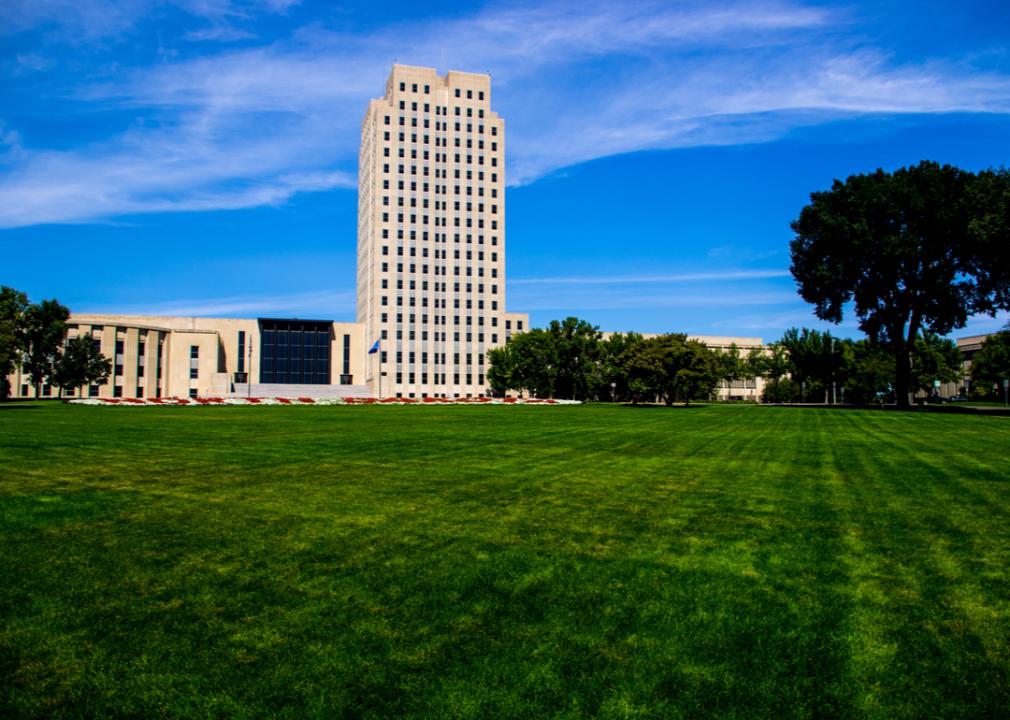
Randall Runtsch // Shutterstock
#18. North Dakota
– Policies: Trigger ban, high-risk
– If abortion bans take effect in all high-risk states:
— Predicted change in abortion rate: -20.4%
— Affected population: 136,216 (91.9% of women aged 15-44)
— New average distance to nearest abortion clinic: 323 miles (121.2% increase)
– Present day:
— Abortion facilities: 1
— Average distance to nearest abortion clinic: 146 miles
North Dakota’s trigger ban allows few exceptions for abortion procedures. People who are victims of rape or incest can get them, and those whose lives are at risk are also included. The 2007 ban was followed by several other restrictions, including the dilation and evacuation ban that Nebraska also put forward.
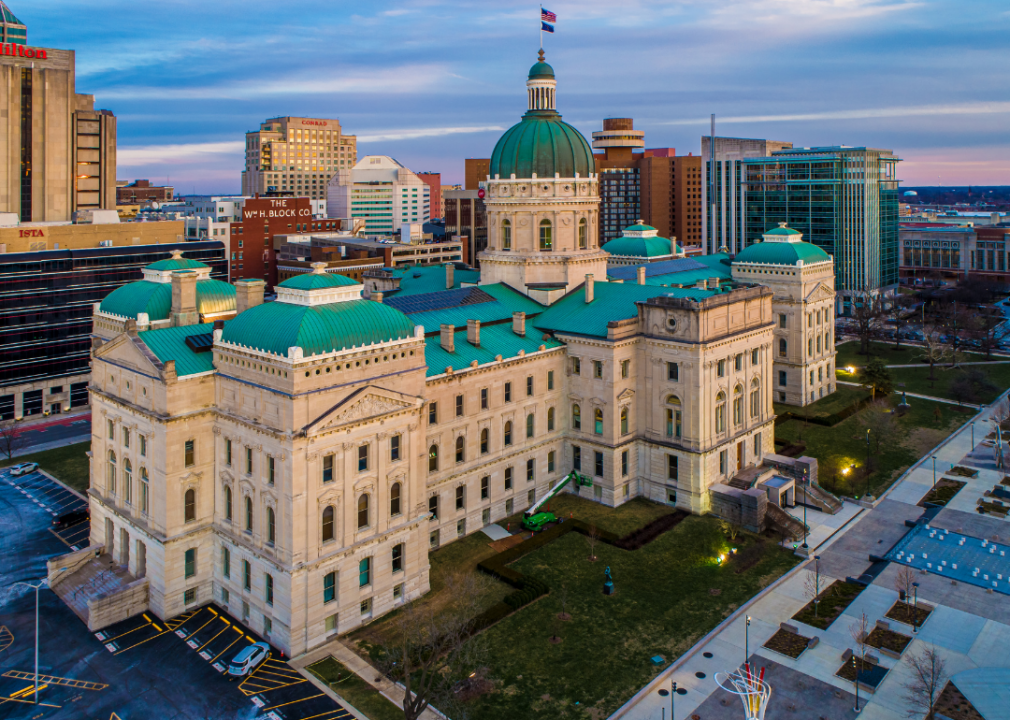
Canva
#17. Indiana
– Policies: High-risk
– If abortion bans take effect in all high-risk states:
— Predicted change in abortion rate: -24.1%
— Affected population: 1,307,855 (99.8% of women aged 15-44)
— New average distance to nearest abortion clinic: 129 miles (279.4% increase)
– Present day:
— Abortion facilities: 7
— Average distance to nearest abortion clinic: 34 miles
As part of the block of states in the Midwest ready to ban abortions via bills or amendments, Indiana has tried to repeal any protections for the procedure that exist. Their proposed ban is strict: should Roe v. Wade be nullified, there would be no abortions allowed, not even in cases of rape or incest, and if performed, they would be classified as murder.
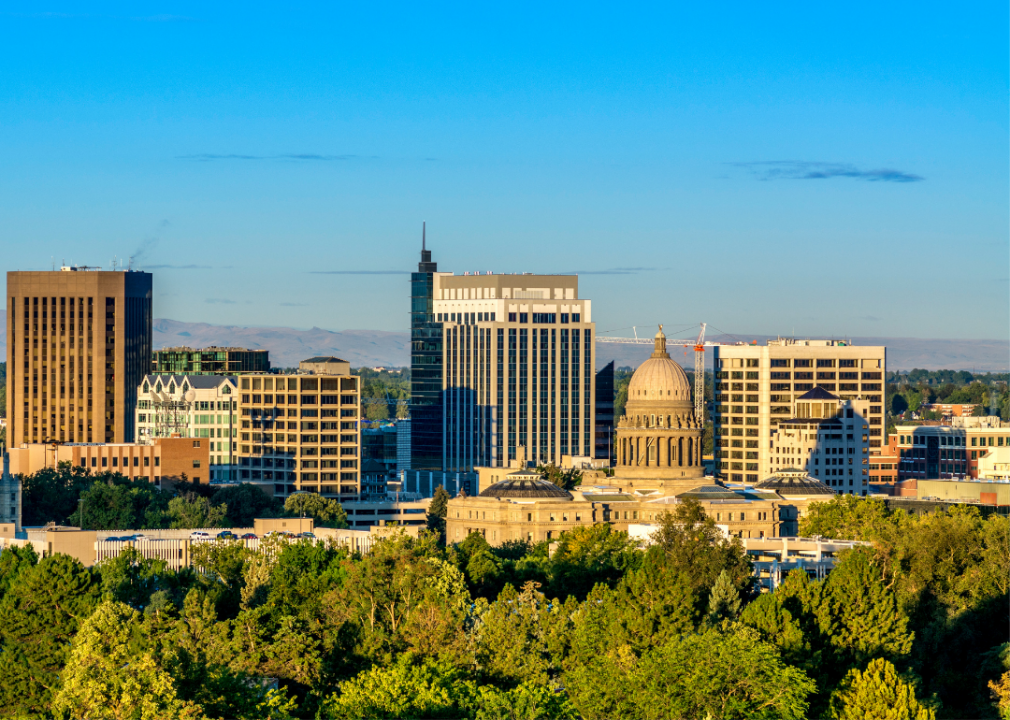
Canva
#16. Idaho
– Policies: Trigger ban, high-risk
– If abortion bans take effect in all high-risk states:
— Predicted change in abortion rate: -24.8%
— Affected population: 224,181 (65.0% of women aged 15-44)
— New average distance to nearest abortion clinic: 173 miles (355.3% increase)
– Present day:
— Abortion facilities: 4
— Average distance to nearest abortion clinic: 38 miles
Idaho Gov. Brad Little signed an abortion ban in April 2021, along with a wave of other nearby states. It’s considered a “heartbeat bill,” one that requires doctors to decline abortions to mothers with a detectable fetal heartbeat, and would only go into effect if a federal appeals court upholds a similar heartbeat ban. A heartbeat can be detected as early as six weeks into a pregnancy.
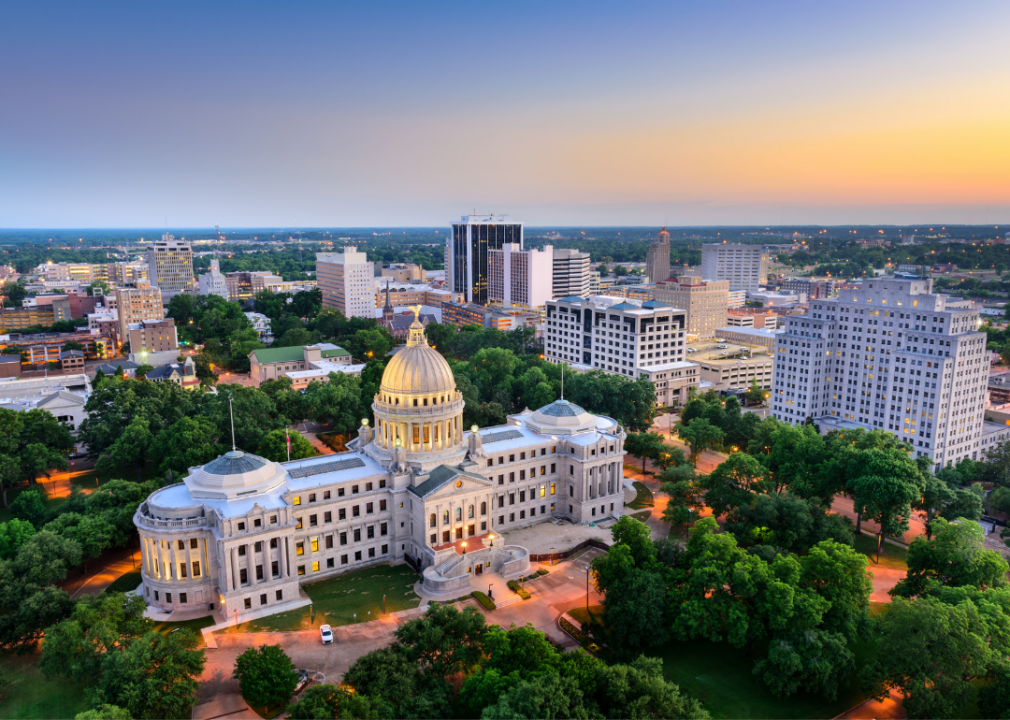
Canva
#15. Mississippi
– Policies: Trigger ban, high-risk
– If abortion bans take effect in all high-risk states:
— Predicted change in abortion rate: -27.9%
— Affected population: 584,299 (100.0% of women aged 15-44)
— New average distance to nearest abortion clinic: 250 miles (303.2% increase)
– Present day:
— Abortion facilities: 1
— Average distance to nearest abortion clinic: 62 miles
Mississippi is one of eight states that has a pre-Roe abortion ban, and a loud voice in the fight to repeal the landmark Supreme Court case. The Supreme Court decided in May 2021 to review Dobbs v. Jackson Women’s Whole Health, a case concerning Mississippi’s 15-week abortion ban. Though the state had initially focused its argument on defending that specific ban, it recently made overturning Roe v. Wade part of its pending argument before the Supreme Court. The court will have a decision by June 2022.
You may also like: Major newspaper headlines from the year you were born
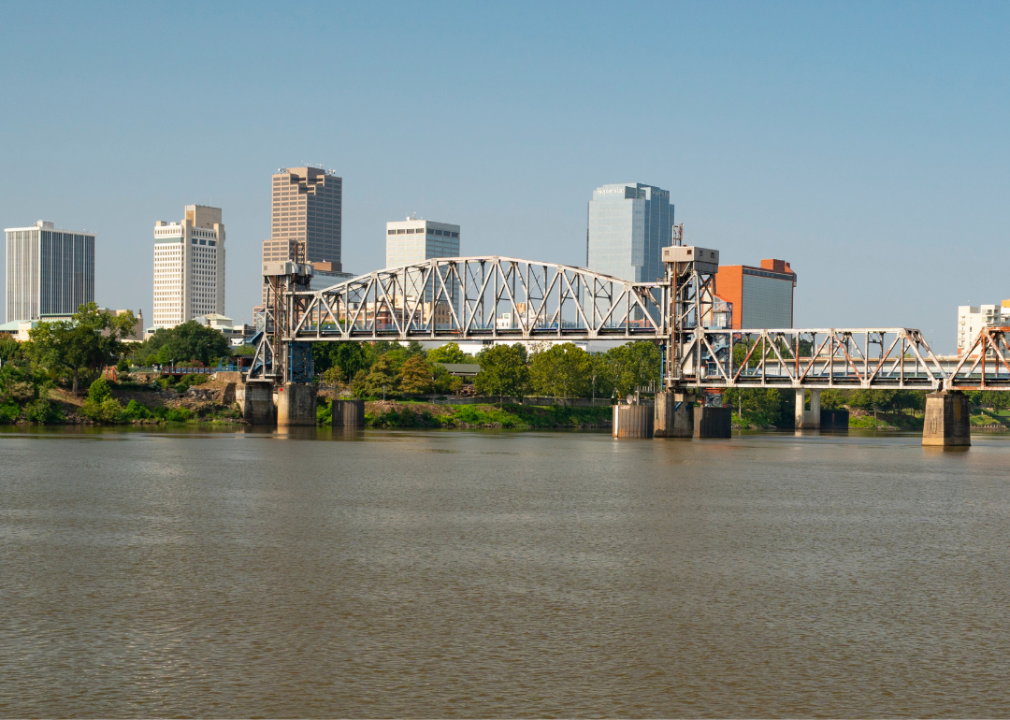
Canva
#14. Arkansas
– Policies: Trigger ban, high-risk
– If abortion bans take effect in all high-risk states:
— Predicted change in abortion rate: -28.8%
— Affected population: 578,319 (100.0% of women aged 15-44)
— New average distance to nearest abortion clinic: 314 miles (330.1% increase)
– Present day:
— Abortion facilities: 2
— Average distance to nearest abortion clinic: 73 miles
Surrounded on all sides by abortion-restrictive states, Arkansas is in a precarious spot when it comes to protecting the right to abortion. Along with several states that introduced new bans in 2021, its legislature introduced an expansive abortion ban that was blocked by a federal judge in July 2021. Arkansas’ pre-Roe ban on abortion has not been repealed.

Canva
#13. Kentucky
– Policies: Trigger ban, high-risk
– If abortion bans take effect in all high-risk states:
— Predicted change in abortion rate: -30.4%
— Affected population: 848,023 (100.0% of women aged 15-44)
— New average distance to nearest abortion clinic: 266 miles (315.6% increase)
– Present day:
— Abortion facilities: 2
— Average distance to nearest abortion clinic: 64 miles
In former Kentucky Gov. Matt Bevin’s quest to become “the most pro-life governor in America,” he signed four anti-abortion bills during his term, two of which were blocked by federal judges. House Bill 148, Kentucky’s full ban on abortion, is unenforceable while Roe v. Wade is still intact. The state’s current governor, Democrat Andy Beshear, is pro-choice. Beshear has had difficulty stopping pro-life legislation from becoming law since the state House and Senate have a Republican supermajority.

Canva
#12. Oklahoma
– Policies: Trigger ban, high-risk
– If abortion bans take effect in all high-risk states:
— Predicted change in abortion rate: -32.2%
— Affected population: 759,207 (98.0% of women aged 15-44)
— New average distance to nearest abortion clinic: 191 miles (416.2% increase)
– Present day:
— Abortion facilities: 5
— Average distance to nearest abortion clinic: 37 miles
Oklahoma’s trigger ban was enacted in 2021, though its existing abortion laws were already restrictive for young women and for clinics. Oklahoma, and many of its surrounding states, have TRAP laws, or what Planned Parenthood calls “medically unnecessary,” building requirements that a clinic must meet to provide abortions.

Canva
#11. North Carolina
– Policies: High-risk
– If abortion bans take effect in all high-risk states:
— Predicted change in abortion rate: -32.3%
— Affected population: 2,017,049 (98.1% of women aged 15-44)
— New average distance to nearest abortion clinic: 169 miles (576.0% increase)
– Present day:
— Abortion facilities: 19
— Average distance to nearest abortion clinic: 25 miles
The governor of North Carolina has vetoed multiple anti-abortion bills, one of which would have made it a crime to refuse treatment to “any infant born alive after an abortion.” (In his veto, Gov. Roy Cooper noted that “[this] practice simply does not exist.”) With an unconstitutional, pre-Roe abortion ban, and four border states without any legal protections, people in this state will be greatly affected by the conflict. North Carolina’s governor has demonstrated pro-choice stances, which may be helpful in the future.
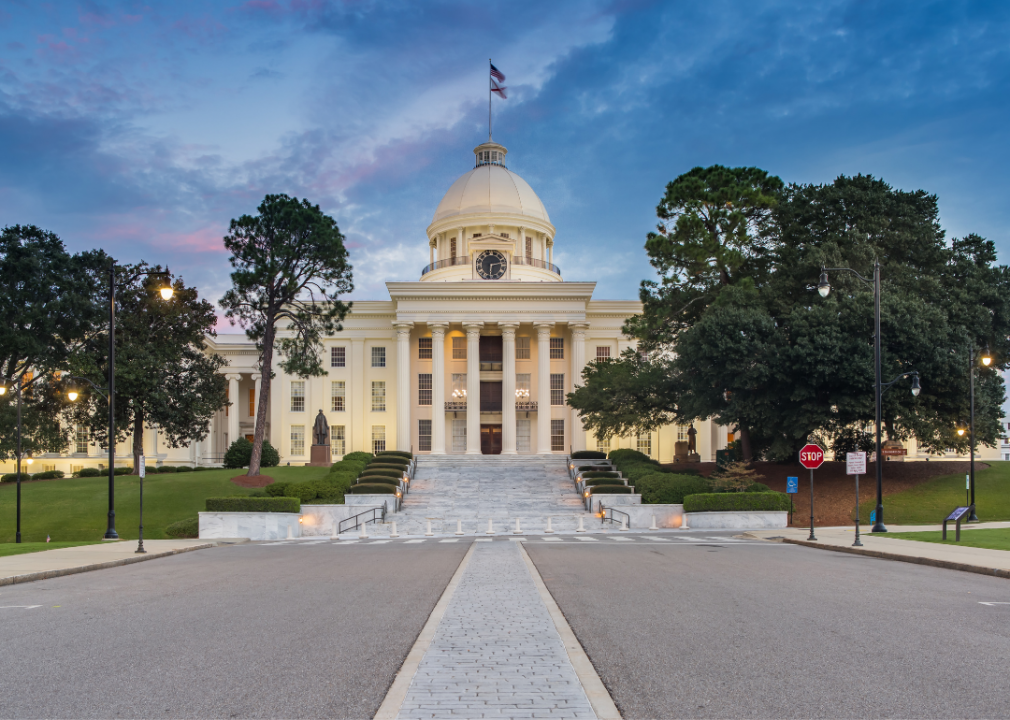
Canva
#10. Alabama
– Policies: High-risk
– If abortion bans take effect in all high-risk states:
— Predicted change in abortion rate: -32.5%
— Affected population: 912,878 (96.2% of women aged 15-44)
— New average distance to nearest abortion clinic: 224 miles (622.6% increase)
– Present day:
— Abortion facilities: 5
— Average distance to nearest abortion clinic: 31 miles
The southern states feature pre-Roe and post-Roe bans, and if the decision is repealed, the amount of clinics that are available to provide abortions will be severely limited in the area. Alabama was prosecuting misdemeanor abortion cases in the ’60s and ’70s, and it still hasn’t repealed the law that originally enforced that ban. In 2019, Alabama’s governor signed another law banning most types of abortions that would be enforceable should Roe fall.
You may also like: Most lopsided state legislatures in America

Canva
#9. Ohio
– Policies: High-risk
– If abortion bans take effect in all high-risk states:
— Predicted change in abortion rate: -33.2%
— Affected population: 2,171,938 (98.2% of women aged 15-44)
— New average distance to nearest abortion clinic: 181 miles (624.0% increase)
– Present day:
— Abortion facilities: 9
— Average distance to nearest abortion clinic: 25 miles
Ohio’s “most restrictive abortion law in modern history” arrived with the wave of 2019 laws to undermine Roe v. Wade. A judge blocked Ohio’s recent “heartbeat” bill, which bans abortion at the detection of a fetal heartbeat, around six weeks into pregnancy, and which progressive lawmakers argued would put women’s lives at a high risk. Though the judge in this case said the law potentially conflicts with the constitution, it has a chance of taking effect in a post-Roe country.
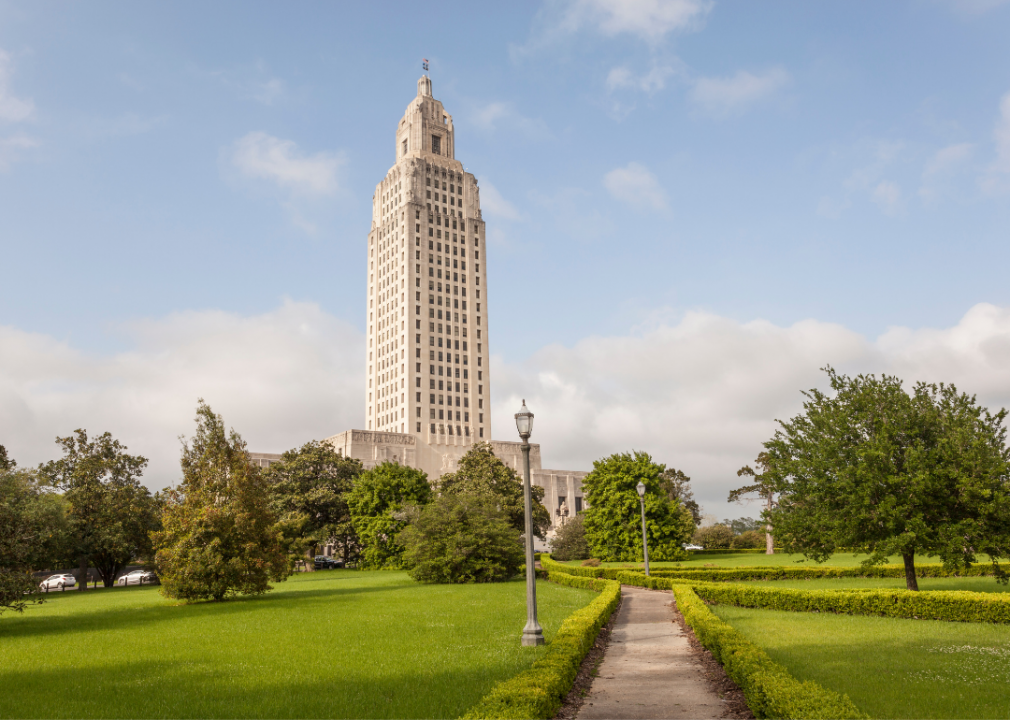
Canva
#8. Louisiana
– Policies: Trigger ban, high-risk
– If abortion bans take effect in all high-risk states:
— Predicted change in abortion rate: -34.3%
— Affected population: 922,449 (100.0% of women aged 15-44)
— New average distance to nearest abortion clinic: 294 miles (525.5% increase)
– Present day:
— Abortion facilities: 3
— Average distance to nearest abortion clinic: 47 miles
The heartbeat bill streak made its way to Louisiana in May 2019, in the form of a trigger ban that would go into effect if Roe is repealed. Making it constitutional to ban abortions before people are aware they are pregnant would affect the entire South.

Canva
#7. Utah
– Policies: Trigger ban, high-risk
– If abortion bans take effect in all high-risk states:
— Predicted change in abortion rate: -35.7%
— Affected population: 644,869 (91.8% of women aged 15-44)
— New average distance to nearest abortion clinic: 272 miles (597.4% increase)
– Present day:
— Abortion facilities: 2
— Average distance to nearest abortion clinic: 39 miles
Utah is in a peculiar place, politically and geographically. Pre-Roe, there were no express bans on abortion, but post-Roe, there were no express protections for it, either. It’s also too far from California for anyone to benefit from nearby clinics. In March 2020, a trigger ban was passed to prep for a Roe v. Wade recall. The state also passed an 18-week ban on abortions in 2019.

Canva
#6. Georgia
– Policies: High-risk
– If abortion bans take effect in all high-risk states:
— Predicted change in abortion rate: -36%
— Affected population: 2,035,985 (93.4% of women aged 15-44)
— New average distance to nearest abortion clinic: 249 miles (789.3% increase)
– Present day:
— Abortion facilities: 14
— Average distance to nearest abortion clinic: 28 miles
The center of the South’s legacy of abortion bans is Georgia. The Georgia legislature rode the anti-abortion legislation wave early with a sweeping abortion ban signed in 2019, set to take effect in 2020, but permanently blocked in the summer of that year. This version of the “heartbeat” bill solidified the state’s stance against Roe v. Wade.
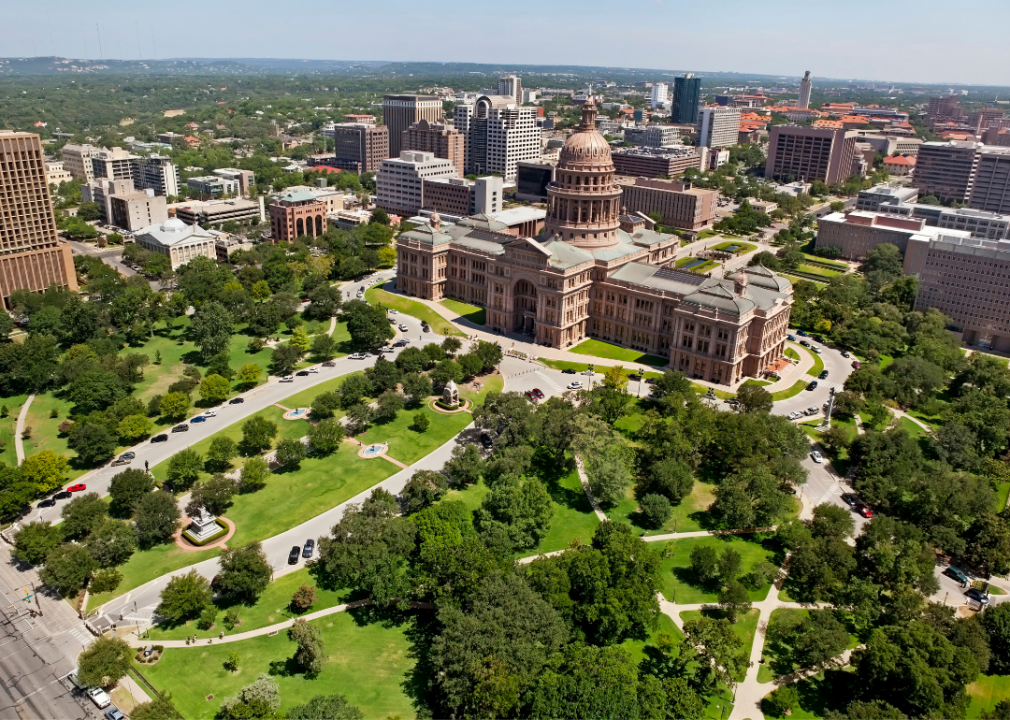
Canva
#5. Texas
– Policies: Trigger ban, high-risk
– If abortion bans take effect in all high-risk states:
— Predicted change in abortion rate: -37.1%
— Affected population: 6,018,754 (99.7% of women aged 15-44)
— New average distance to nearest abortion clinic: 471 miles (1077.5% increase)
– Present day:
— Abortion facilities: 22
— Average distance to nearest abortion clinic: 40 miles
Other states have trigger bans, but Texas added a unique proposition where citizens would be allowed to sue clinics that perform abortions. This is in addition to a ban on abortions around six weeks, which was signed into law May 2020.
You may also like: Most and least popular senators in America

Canva
#4. Tennessee
– Policies: Trigger ban, high-risk
– If abortion bans take effect in all high-risk states:
— Predicted change in abortion rate: -37.4%
— Affected population: 1,333,861 (100.0% of women aged 15-44)
— New average distance to nearest abortion clinic: 294 miles (716.7% increase)
– Present day:
— Abortion facilities: 7
— Average distance to nearest abortion clinic: 36 miles
Tennessee has several restrictions in place already. Gov. Bill Lee signed a heartbeat bill into law in 2020, which a federal judge temporarily blocked from taking effect shortly after it was passed. It is still making its way through the courts. In 2020, the state’s legislature put forth a bill that allows fathers to deny the pregnant mothers of their children an abortion, without the woman’s consent.
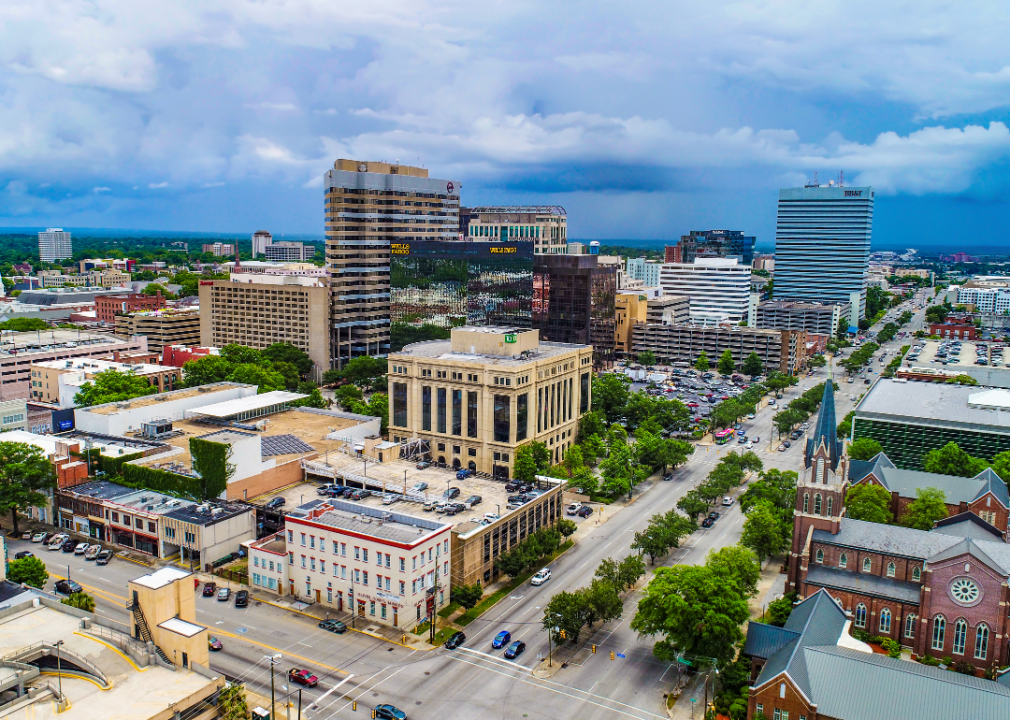
Canva
#3. South Carolina
– Policies: High-risk
– If abortion bans take effect in all high-risk states:
— Predicted change in abortion rate: -38.6%
— Affected population: 984,181 (100.0% of women aged 15-44)
— New average distance to nearest abortion clinic: 267 miles (790.0% increase)
– Present day:
— Abortion facilities: 3
— Average distance to nearest abortion clinic: 30 miles
South Carolina’s latest abortion law, which bans the procedure at the detection of a fetal heartbeat, hit snags in federal court back in March 2021 when it was indefinitely blocked. Not only is South Carolina surrounded geographically by states with similar problems, but it is also supported by 20 other states that want this abortion ban to succeed.

Canva
#2. Michigan
– Policies: High-risk
– If abortion bans take effect in all high-risk states:
— Predicted change in abortion rate: -39.6%
— Affected population: 1,876,586 (99.9% of women aged 15-44)
— New average distance to nearest abortion clinic: 239 miles (1393.8% increase)
– Present day:
— Abortion facilities: 26
— Average distance to nearest abortion clinic: 16 miles
Michigan’s court has decided the state’s pre-Roe ban of abortion procedures is only unconstitutional (as applied to physicians) thanks to Roe v. Wade, so the debate on that case’s constitutionality will directly affect it. Still, Michigan Gov. Gretchen Whitmer is seen as pro-choice, and was once criticized by anti-abortion activists for calling abortion “life-sustaining.” Michigan’s attorney general has also said she would not prosecute doctors performing abortions or anyone seeking them.

Canva
#1. Arizona
– Policies: High-risk
– If abortion bans take effect in all high-risk states:
— Predicted change in abortion rate: -40.3%
— Affected population: 1,316,221 (94.1% of women aged 15-44)
— New average distance to nearest abortion clinic: 247 miles (1352.9% increase)
– Present day:
— Abortion facilities: 8
— Average distance to nearest abortion clinic: 17 miles
In the renewed fight to restrict abortions, Arizona lawmakers are ready to challenge Roe v. Wade. One new Arizona law expressly rejects any federal decisions on abortion laws, which may not be constitutional. Since the ’60s, the state has passed laws banning abortion that cannot be enforced until the Supreme Court’s landmark decision falls.
You may also like: Youngest and oldest presidents in U.S. history